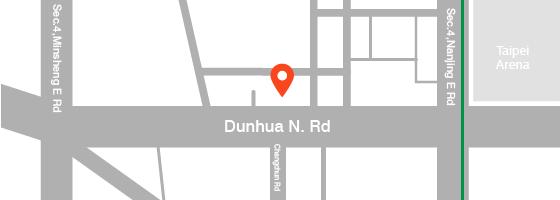

Polo Shirt Manufacturing Process at Garment Factory
Do you know how a polo shirt is made? Do you know which SiRUBA sewing machine is used for each production step? Let’s take a journey to the garment factory and find out together!
《 Bottom Hemming 》
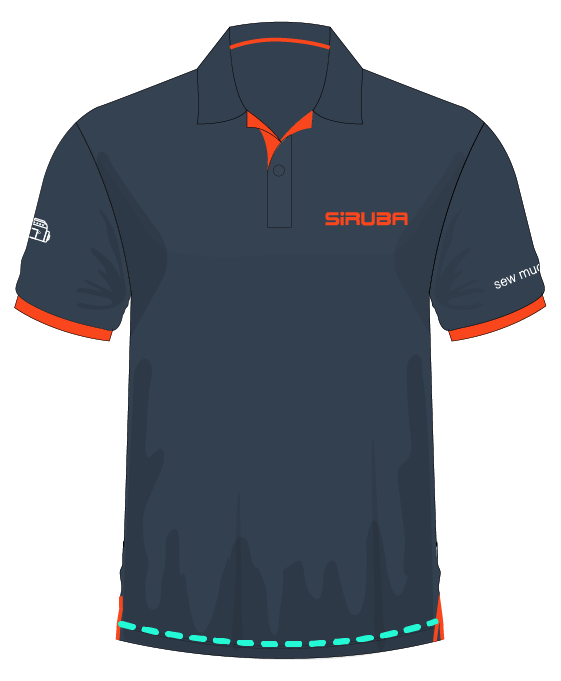
Hem stitching involves various sewing techniques, depending on the desired effect, fabric type, and production requirements.
※Overlock Machine By overlocking the fabric edges to prevent fraying or wear, it is commonly used for the hems of stretch fabrics.
< Applicable Machines >
• 737L-505F-2-04 (T-SHIRT)
※Interlock Machine By folding and stitching the fabric edges, a durable and elastic hem is created, commonly used for knit or highly stretchable fabrics.
< Applicable Machines >
• C007KP-W122-356/CH
• C007KP-W812-356/CRL
※Automation Through precise hemming and automated stitching, it operates at high speed and efficiency, making it suitable for mass production of hems on highly elastic or standard fabrics.
《 Pocket Sewing 》
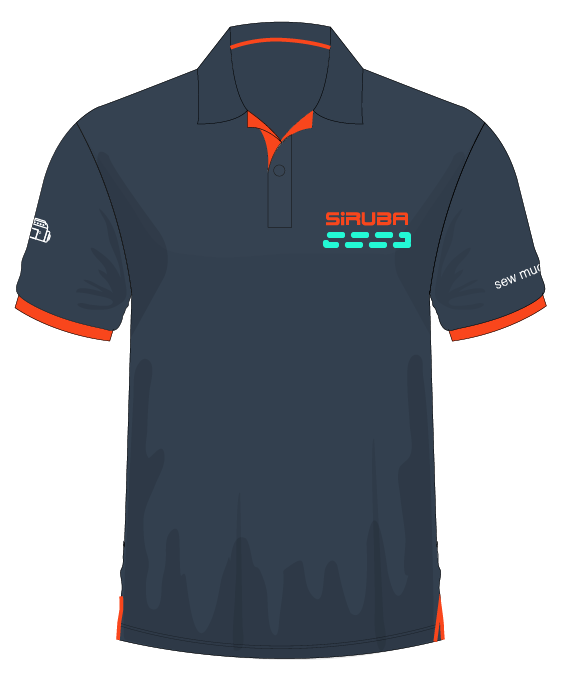
• Flap Pocket: The pocket flap protects the items inside the pocket and prevents dust and dirt, commonly found in suits, jackets, and similar garments.
• Patch Pocket: The pocket is directly sewn onto the garment’s surface, offering both decorative and functional purposes, commonly used in casual wear or workwear.
• Insert Pocket: The pocket opening is integrated into the seam of the garment, offering high concealment and is ideal for styles emphasizing streamlined design. It is commonly found in pants, jackets, and skirts.
< Applicable Machines >
• PSM101/LASER/
《 Pocket Hemming 》
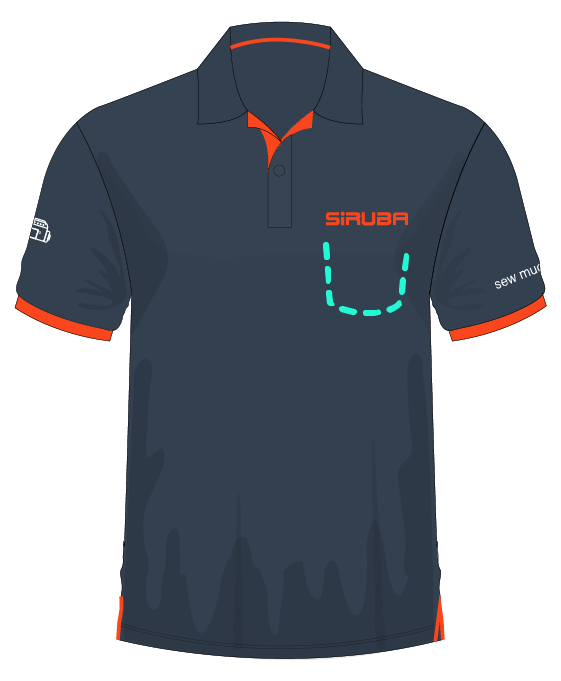
• Overlock:
By overlocking the edges of the pocket lining, fraying or wear is prevented, commonly used in functional garments such as jeans and sportswear.
< Applicable Machines >
• 747L-514M-3-24
• Interlock:
By folding and stitching the pocket lining, it becomes durable and elastic, commonly used for knit or stretchy fabrics.
• Lockstitch:
By folding and stitching the pocket lining, the edges are neat and aesthetically pleasing, commonly used in high-end garments.
< Applicable Machines >
• DL7500S
• DL7200C
《 Placket Sewing 》
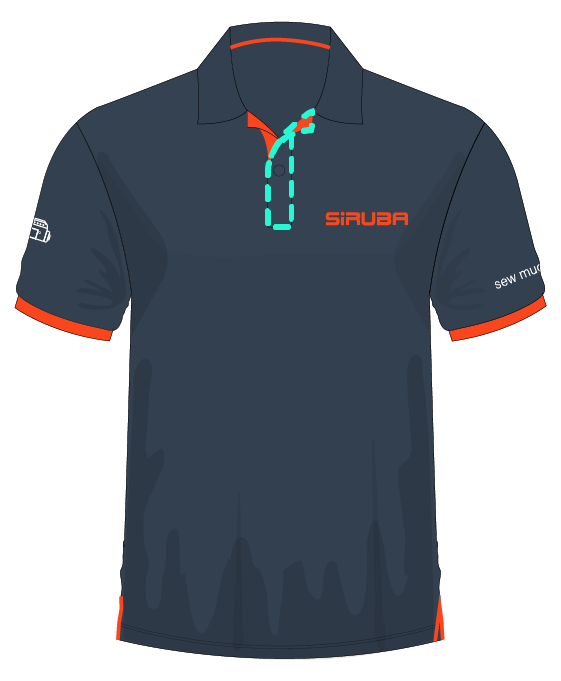
Common methods for making plackets include single-needle chain stitching and double-needle chain stitching. These provide a certain level of elasticity and durability, making them ideal for knit fabrics. The stitching’s backside forms a chain-like structure, which helps prevent the thread from breaking under high tension.
• Single Needle Chain Stitch:
Suitable for simple placket fastening, with a straightforward process and fast speed.
< Applicable Machines >
• DL7500S
• DL7200C
• SPECIAL MACHINE:
Enhances overall durability and adds more decorative appeal.
< Applicable Machines >
• PSM/LASER
《 Shoulder Seam 》
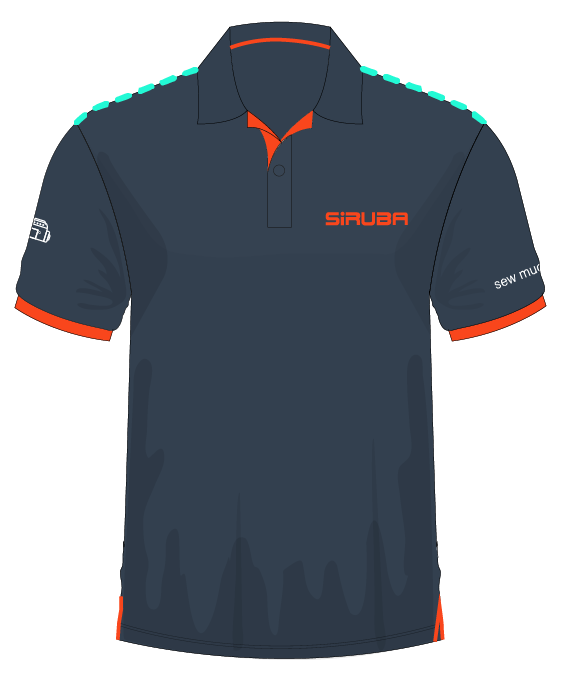
When sewing the front and back pieces of a Polo shirt, the shoulder seams are typically stitched together first to ensure structural stability, making it easier to attach the sleeves and collar later. In this process, the overlock machine is the most commonly used choice, as it simultaneously joins the body pieces and overlocks the edges to prevent fraying or wear. This is especially important for knit fabrics (such as Polo shirts), as the overlock machine provides elasticity to accommodate the fabric’s stretch.
< Applicable Machines >
• 747L-514M-3-24
Shoulder Coverstitching

Shoulder topstitching reinforcement primarily aims to enhance the stability of the shoulder structure, preventing deformation or damage to the shoulder seam due to stretching or movement. Additionally, it improves the wearing comfort of the Polo shirt, making the shoulder area fit better. This step typically uses Triple Needle Stitching or Double Needle Stitching for reinforcement, leaving a smooth topstitch on the shoulder to enhance its strength. Among these, the straight-barrel, “pig nose” machine is the most widely used. Unlike traditional coverstitch machines, the pig nose machine’s stitching direction is designed to be more ergonomic, improving sewing fluidity and operational efficiency.
< Applicable Machines >
• VTS1500
• C007KP-W122-356
• F007KP-W122-356
Sleeves Attaching
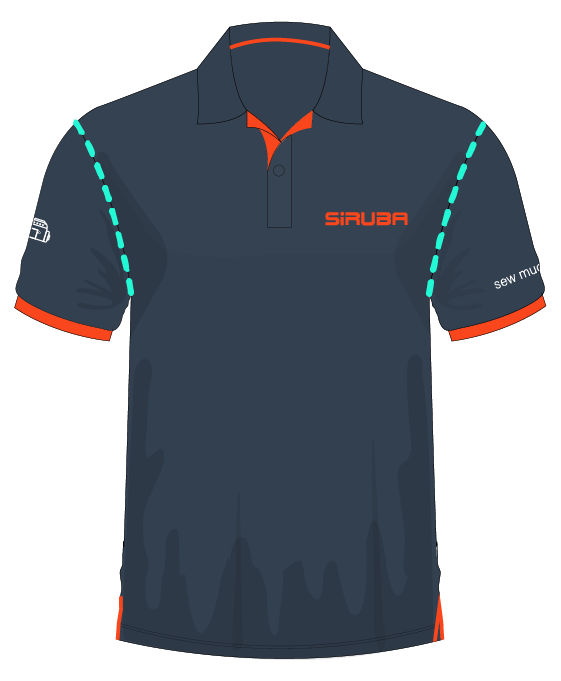
When attaching the sleeves to the body of a Polo shirt, an overlock machine is typically used to stitch along the armhole curve while simultaneously finishing the fabric edges. This is suitable for most knit fabrics, providing elasticity and durability.
< Applicable Machines >
• 747L-514M-3-24
Sleeves Coverstitching

After attaching the sleeves to the body of the Polo shirt, the seam is typically stitched again. Topstitching effectively secures the fabric at the seam, preventing thread unraveling or fabric deformation, and increasing structural stability, especially in high-movement areas (such as the armhole). It also reduces seam bulges or unevenness, minimizing friction and improving wearing comfort. Additionally, topstitching can serve as a decorative element, enhancing the design of the garment and making the armhole lines smoother. This step typically uses Triple Needle Stitching or Double Needle Stitching for reinforcement. Among these, the straight-barrel “pig nose” machine is the most widely used, as its stitching direction is more ergonomic than traditional coverstitch machines, improving sewing fluidity and operational efficiency.
< Applicable Machines >
• C007KP-W122-356
• F007K-W122-356
• VTS1500
Side Seam
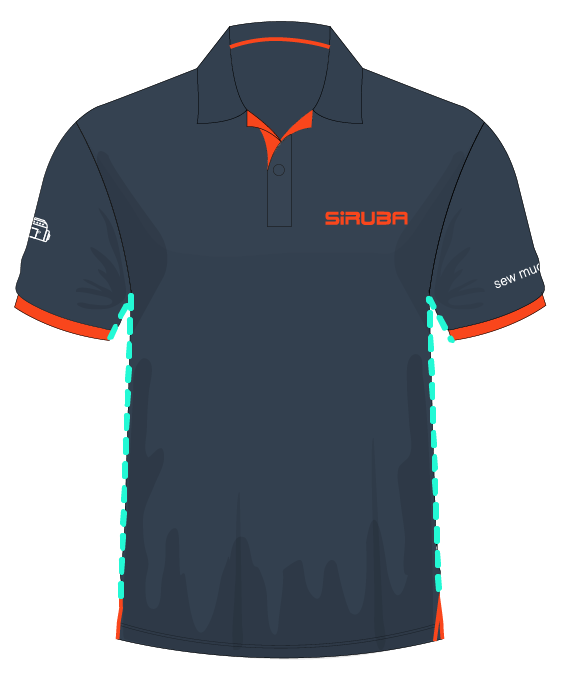
The front and back pieces of a Polo shirt are typically sewn together along the side seams using an overlock machine, covering the entire area from the underarm to the hem. This forms a complete garment structure, ensuring the basic functionality of the clothing. Overlocking effectively prevents fabric edges from fraying or unraveling, ensuring the garment remains durable even after regular wear and multiple washes.
< Applicable Machines >
• 747L-514-3-24/BKF
Cuff Decoration Seaming
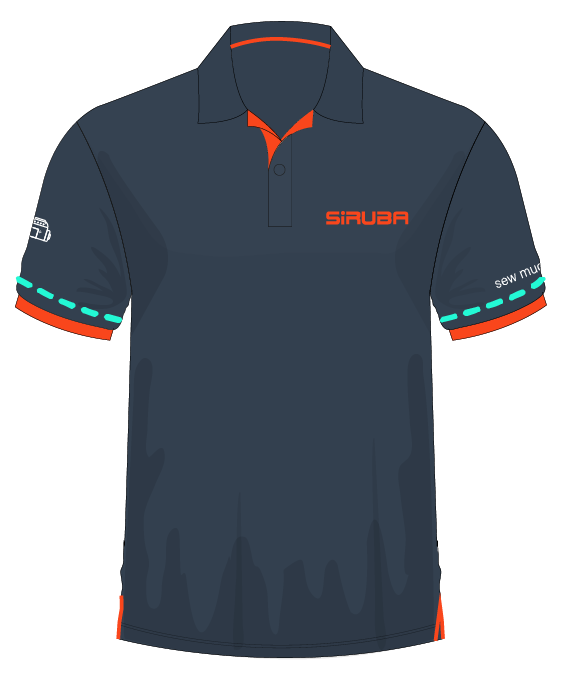
When sewing cuff decorations (such as ribbing, contrasting fabric, or decorative strips), the ends of the decorative fabric are typically first stitched together using a Lockstitch Machine to form a complete circle, then attached to the cuff. This method ensures the durability and neatness of the fabric seam, allowing for smoother and more symmetrical attachment to the cuff, enhancing the final appearance and wearability of the garment.
< Applicable Machines >
• DL7500
• DL7200C
Cuff Decoration Attaching

Attaching decorative fabric to the cuff using Overlock Stitching simultaneously completes the stitching and edge finishing, ensuring secure seams and neat edges while preventing fabric fraying and extending the lifespan of the cuff. The contrasting fabric cuff decoration enhances both the design and functionality of the garment. This process not only improves the aesthetics and stability of the cuff but also accommodates diverse design needs, providing reliable support for high-quality garment production.
< Applicable Machines >
• 747L-514M-3-24
Cuff Coverstitching

After the decorative fabric is attached to the cuff using the overlock machine, it undergoes further topstitching for reinforcement. This process strengthens the cuff structure, ensuring secure fabric seams that are less likely to unravel, while preventing the decorative fabric from curling or deforming. The topstitching also enhances the design of the cuff, adding refinement and a three-dimensional effect to the details. This technique not only improves the durability and comfort of the garment but also elevates the final appearance and quality, making it particularly suitable for garment designs that require decorative details.
< Applicable Machines >
• C007KP-W122-356
• F007-W122-356
Side Vent
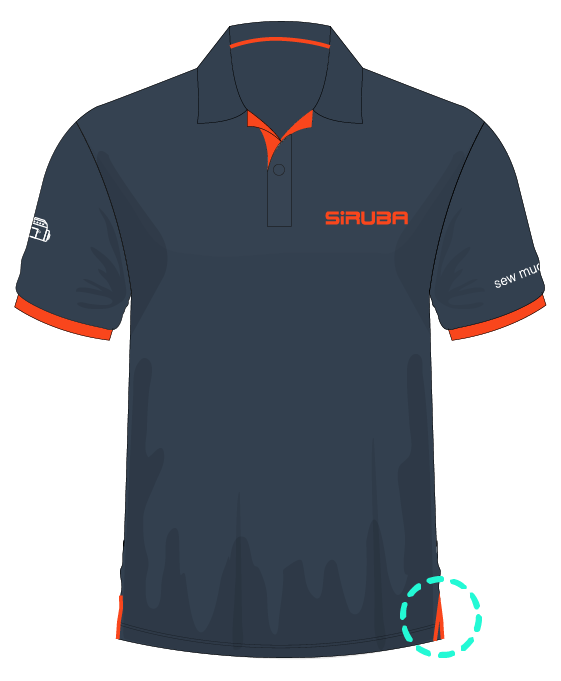
Using contrasting fabric as decoration sewn at the small side vents of the hem not only enhances the design of the garment but also reinforces the structural stability of the vent area, reducing the risk of wear or seam unraveling caused by frequent movement.
< Applicable Machines >
• FA007
• DL7500S
• DL7200C
Collar Securing
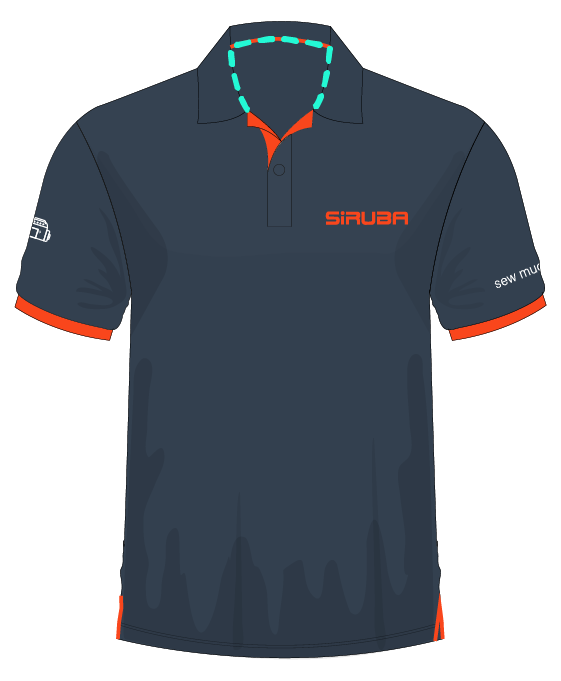
In the production of polo shirts, the collar piece is typically pre-processed using a lockstitch machine to ensure structural stability. Once completed, the processed collar is sewn onto the garment body, enhancing sewing efficiency and final product quality. This procedure ensures both the appearance and structural integrity of the garment, making it particularly suitable for designs that emphasize collar details.
< Applicable Machines >
• DL7220C
• DL7500S
Collar Attaching
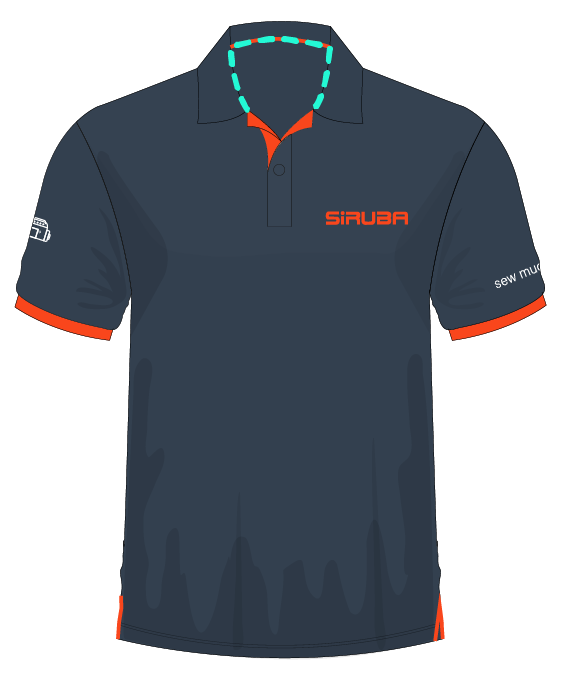
Collars that have undergone initial processing with a lockstitch machine are typically attached to the neckline of the garment using an overlock machine. This ensures secure stitching, prevents fraying or wear on the fabric edges, and enhances the stability of the connection between the collar and the garment body. As a result, the garment can better withstand the tension and abrasion of everyday wear and use.
< Applicable Machines >
• 757L-514M-3-24
• F007-W222-356
Collar Binding / Collar Coverstitching

After the collar is sewn to the garment body, a contrasting fabric strip is stitched along the seam between the collar and the garment body, followed by topstitching. This not only reinforces the structure, preventing damage to the seam from pulling or friction during wear but also enhances durability, allowing the garment to withstand greater wear and more frequent washing. Additionally, it adds a touch of design and visual contrast. Finally, a lockstitch machine or coverstitch machine is used to topstitch and secure the strip in place, ensuring it remains flat and firmly attached.
< Collar Binding – Applicable Machines >
• DL7500S
• DL7200C
< Collar Coverstitching >
Buttonholes Sewing
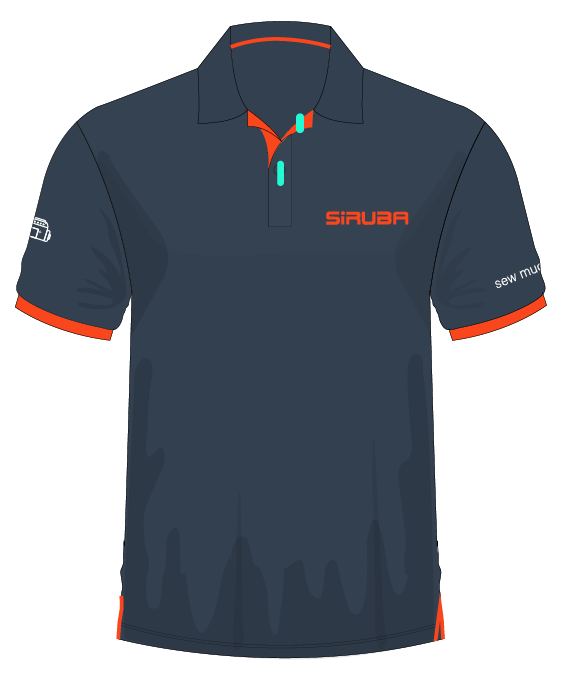
Buttonhole stitching creates reinforced openings for buttons to pass through, effectively preventing the fabric edges from fraying or tearing due to prolonged use and pulling. A built-in buttonhole knife is then used to precisely cut the openings, ensuring smooth passage for buttons. The stitching and cutting processes are performed simultaneously, significantly improving production efficiency. This method is ideal for mass production, delivering products that are efficient, precise, and aesthetically pleasing.
< Applicable Machines >
• LBHS1790
Buttons Attaching
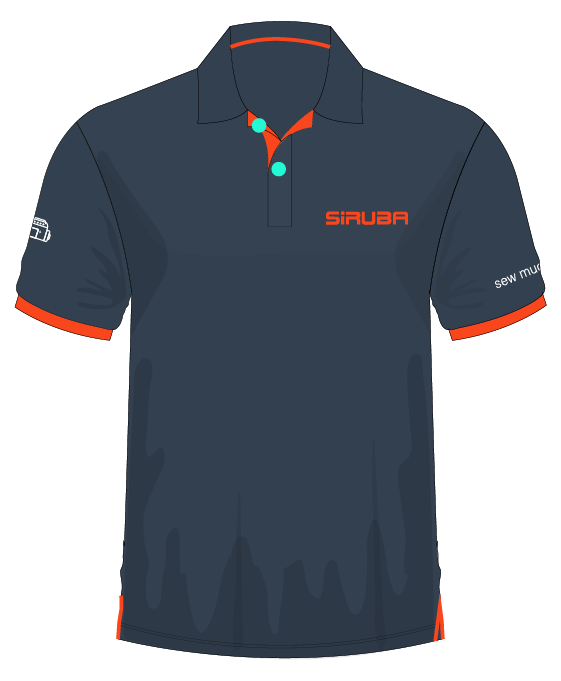
The button sewing machine uses fully automated operations to complete the positioning, fastening, and stitching of buttons, minimizing manual involvement and significantly increasing production efficiency. It ensures precise control of button placement and stitching, preventing misalignment or loose attachments. The machine is easy to operate, reducing technical skill requirements and improving the productivity of operators.
< Applicable Machines >
• BT438
🧵 Recommended Sewing Machines
Bottom Hemming
• 737L-505F-2-04
• C007KP-W812A-356/CRL
• C007L/LX-W812A-356/CR
• ASC-PBH100
• C007KP-W122-356/CH
• C007L/LX-W122-356/CH
Buttons Attaching
• ASO-ABF100
• ASP-CBS100
• LKS-1903D
Pocket Sewing, Placket Sewing
• DL7200C
• DL7200D
• DL7500S
• DL720
Pocket Hemming , Shoulder Seam
• 747L-514M-3-24/TG
Side Seam
• 747L-514M-3-24
• 747L-514M-7-23/BK
• 747L-514M-3-24/BKF1
• 747L-514M-3-24/ECA/BKT
Cuff Binding
• ASK-ASM101
Buttonholes Sewing
• LBHS-1790D
• ASP-CBH100
